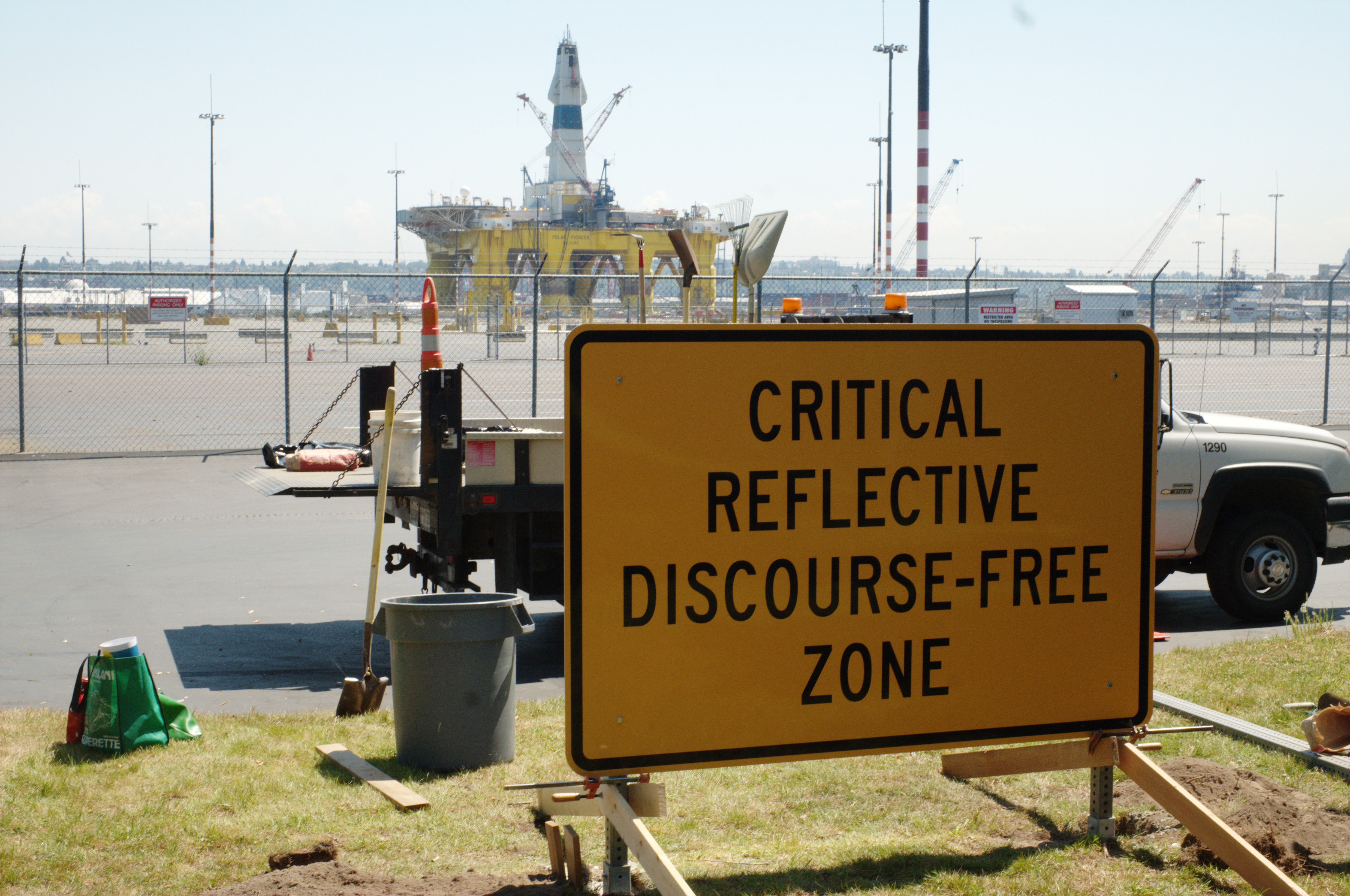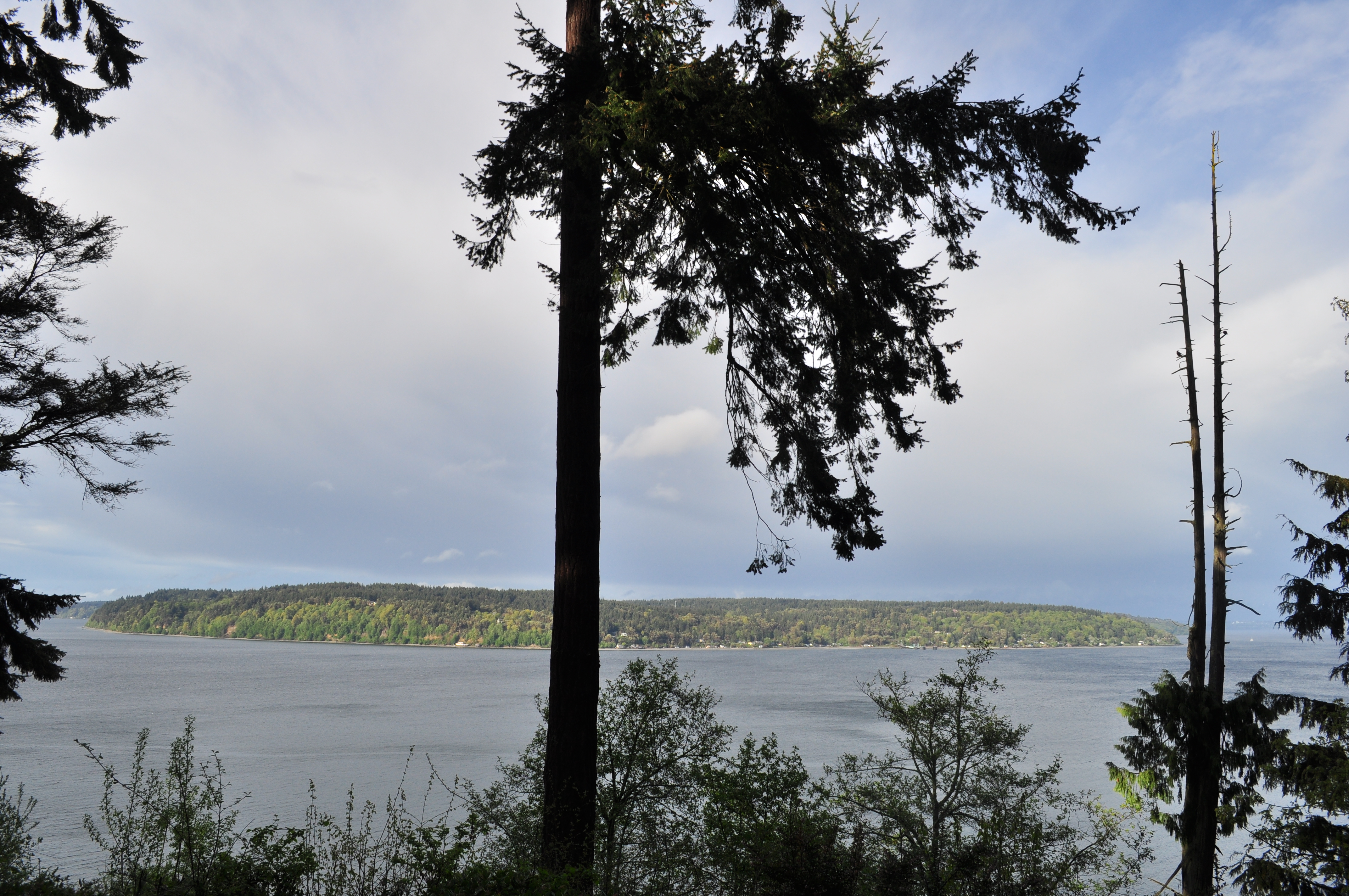|
Kayaktivism
Protests against Arctic drilling began in Seattle in 2015 in response to the news that the Port of Seattle authority made an agreement with Royal Dutch Shell to berth offshore drillships and semi-submersibles at the Port's Terminal 5 (T5) during the off-season of oil exploration in Alaskan waters of the Arctic. Hundreds of protesters took to Elliott Bay in kayaks, rafts, and other small boats, both as a demonstration and to interrupt docking of Shell's ''Polar Pioneer'' semi-submersible drilling vessel at Terminal 5. The waterborne demonstrators were dubbed kayaktivists by social and news media. On September 27, 2015, Shell announced that their exploration in the summer of 2015 was "disappointing" and that they would abandon further oil exploration in the Arctic "for the foreseeable future". Historical background Seattle has been a staging point for those seeking to exploit the natural resources of the Alaska region since the Klondike Gold Rush of 1896, when the city was th ... [...More Info...] [...Related Items...] OR: [Wikipedia] [Google] [Baidu] |
Petroleum Exploration In The Arctic
The exploration of the Arctic for petroleum is considered to be quite technically challenging. However, recent technological developments, the melting of Arctic permafrost, as well as relatively high oil prices, have allowed for exploration. As a result, the region has received significant interest from the petroleum industry. Since the onset of the 2010s oil glut in 2014, the commercial interest in Arctic exploration has declined. Overview There are 19 geological basins making up the Arctic region. Some of these basins have experienced oil and gas exploration, most notably the Alaska North Slope where oil was first produced in 1968 from Prudhoe Bay. However, only half the basins – such as the Beaufort Sea and the West Barents Sea – have been explored. A 2008 United States Geological Survey estimates that areas north of the Arctic Circle have 90 billion barrels of undiscovered, technically recoverable oil (and 44 billion barrels of natural gas liquids ) in 25 geological ... [...More Info...] [...Related Items...] OR: [Wikipedia] [Google] [Baidu] |
Vashon Island
Vashon is a census-designated place (CDP) in King County, Washington, United States. It covers an island alternately called Vashon Island or Vashon–Maury Island, the largest island in Puget Sound south of Admiralty Inlet. The population was 10,624 at the 2010 census and the size is . The island is connected to West Seattle and the Kitsap Peninsula to the north and Tacoma to the south via the Washington State Ferries system, as well as to Downtown Seattle via the King County Water Taxi. The island has resisted the construction of a fixed bridge to preserve its relative isolation and rural character. Vashon Island is also known for its annual strawberry festival, former sheepdog trials, and agriculture. History Vashon Island sits in the midpoint of southern Puget Sound, between Seattle and Tacoma, Washington. In the nearby Pacific Ocean, roughly west of Vashon Island, lies the tectonic boundary known as the Cascadia Subduction Zone, and as such, Vashon Island is one of many ... [...More Info...] [...Related Items...] OR: [Wikipedia] [Google] [Baidu] |
1999 Seattle WTO Protests
The 1999 Seattle WTO protests, sometimes referred to as the Battle of Seattle, were a series of protests surrounding the WTO Ministerial Conference of 1999, when members of the World Trade Organization (WTO) convened at the Washington State Convention and Trade Center in Seattle, Washington on November 30, 1999. The Conference was to be the launch of a new millennial round of trade negotiations. The negotiations were quickly overshadowed by massive street protests outside the hotels and the Washington State Convention and Trade Center. The protests were nicknamed "N30", akin to J18 and similar mobilizations, and were deemed controversial by the media. The large scale of the demonstrations, estimated at no fewer than 40,000 protesters, dwarfed any previous demonstration in the United States against a world meeting of any of the organizations generally associated with economic globalization, such as the WTO, the International Monetary Fund, and the World Bank. Organizations and ... [...More Info...] [...Related Items...] OR: [Wikipedia] [Google] [Baidu] |
Environmentalism
Environmentalism or environmental rights is a broad philosophy, ideology, and social movement regarding concerns for environmental protection and improvement of the health of the environment, particularly as the measure for this health seeks to incorporate the impact of changes to the environment on humans, animals, plants and non-living matter. While environmentalism focuses more on the environmental and nature-related aspects of green ideology and politics, ecologism combines the ideology of social ecology and environmentalism. ''Ecologism'' is more commonly used in continental European languages, while ''environmentalism'' is more commonly used in English but the words have slightly different connotations. Environmentalism advocates the preservation, restoration and improvement of the natural environment and critical earth system elements or processes such as the climate, and may be referred to as a movement to control pollution or protect plant and animal diversity. Fo ... [...More Info...] [...Related Items...] OR: [Wikipedia] [Google] [Baidu] |
Petroleum Industry
The petroleum industry, also known as the oil industry or the oil patch, includes the global processes of exploration, extraction, refining, transportation (often by oil tankers and pipelines), and marketing of petroleum products. The largest volume products of the industry are fuel oil and gasoline (petrol). Petroleum is also the raw material for many chemical products, including pharmaceuticals, solvents, fertilizers, pesticides, synthetic fragrances, and plastics. The industry is usually divided into three major components: upstream, midstream, and downstream. Upstream regards exploration and extraction of crude oil, midstream encompasses transportation and storage of crude, and downstream concerns refining crude oil into various end products. Petroleum is vital to many industries, and is necessary for the maintenance of industrial civilization in its current configuration, making it a critical concern for many nations. Oil accounts for a large percentage of the wor ... [...More Info...] [...Related Items...] OR: [Wikipedia] [Google] [Baidu] |
Prudhoe Bay, Alaska
Prudhoe Bay is a census-designated place (CDP) located in North Slope Borough in the U.S. state of Alaska. As of the 2010 census, the population of the CDP was 2,174 people, up from just five residents in the 2000 census; however, at any given time, several thousand transient workers support the Prudhoe Bay oil field. The airport, lodging and general store are located in Deadhorse, and the rigs and processing facilities are located on scattered gravel pads laid atop the tundra. It is only during winter that the surface is hard enough to support heavy equipment, and new construction happens at that time. Prudhoe Bay is the unofficial northern terminus of the Pan-American Highway. As the bay itself is still 10 miles further north through a security checkpoint, open water is not visible from the highway. A few tourists, arriving by bus after a two-day ride up the Dalton Highway from Fairbanks, come to see the tundra, the Arctic Ocean and the midnight sun, staying in lodgings ass ... [...More Info...] [...Related Items...] OR: [Wikipedia] [Google] [Baidu] |
Alaskan Statehood
The Alaska Statehood Act () was a statehood admission law, introduced by Delegate E.L. Bob Bartlett and signed by President Dwight D. Eisenhower on July 7, 1958, allowing Alaska to become the 49th U.S. state on January 3, 1959. The law was the result of a multiple decade effort from many Alaskans such as Bartlett, Ernest Gruening, Bill Egan, Bob Atwood and Ted Stevens. The law was first introduced by James Wickersham in 1916, shortly after the First Organic Act. However, due to a lack of interest from Alaskans, the bill was never introduced. Efforts ramped up in 1943, with Bartlett's rendition of the act being first introduced in 1947 & 1950, with the backing of President Harry Truman. However, due to opposition from powerful southern U.S. Congressmen, it took until 1958 to pass the law, with the convincing of Bob Bartlett. Gruening worked on rallying support from Alaskans, launching the Alaskan Constitutional Convention in 1956, which elected Bill Egan & Gruening as Shadow U ... [...More Info...] [...Related Items...] OR: [Wikipedia] [Google] [Baidu] |
Territory Of Alaska
The Territory of Alaska or Alaska Territory was an organized incorporated territory of the United States from August 24, 1912, until Alaska was granted statehood on January 3, 1959. The territory was previously Russian America, 1784–1867; the Department of Alaska, 1867–1884; and the District of Alaska, 1884–1912. Origin Passage of the 1899 Criminal Code which, among other things, included a tax on liquor, led to increased calls for Alaskan representation in Congress, and the debate finally ended on August 24, 1912, when the Alaska District became an organized, incorporated territory of the United States. The ''Second Organic Act'' of 1912 renamed the District the Territory of Alaska. By 1916, its population was about 58,000. James Wickersham, a Delegate to Congress, introduced Alaska's first statehood bill, but it failed for lack of interest from Alaskans. Even President Warren G. Harding's unprecedented visit in 1923 (just days before his death) could not create wides ... [...More Info...] [...Related Items...] OR: [Wikipedia] [Google] [Baidu] |
Yukon
Yukon (; ; formerly called Yukon Territory and also referred to as the Yukon) is the smallest and westernmost of Canada's three territories. It also is the second-least populated province or territory in Canada, with a population of 43,964 as of March 2022. Whitehorse, the territorial capital, is the largest settlement in any of the three territories. Yukon was split from the North-West Territories in 1898 as the Yukon Territory. The federal government's ''Yukon Act'', which received royal assent on March 27, 2002, established Yukon as the territory's official name, though ''Yukon Territory'' is also still popular in usage and Canada Post continues to use the territory's internationally approved postal abbreviation of ''YT''. In 2021, territorial government policy was changed so that “''The'' Yukon” would be recommended for use in official territorial government materials. Though officially bilingual (English and French), the Yukon government also recognizes First Natio ... [...More Info...] [...Related Items...] OR: [Wikipedia] [Google] [Baidu] |
Natural Resource
Natural resources are resources that are drawn from nature and used with few modifications. This includes the sources of valued characteristics such as commercial and industrial use, aesthetic value, scientific interest and cultural value. On Earth, it includes sunlight, atmosphere, water, land, all minerals along with all vegetation, and wildlife. Natural resources is a part of humanity's natural heritage or protected in nature reserves. Particular areas (such as the rainforest in Fatu-Hiva) often feature biodiversity and geodiversity in their ecosystems. Natural resources may be classified in different ways. Natural resources are materials and components (something that can be used) that can be found within the environment. Every man-made product is composed of natural resources (at its fundamental level). A natural resource may exist as a separate entity such as fresh water, air, as well as any living organism such as a fish, or it may be transformed by extractivist in ... [...More Info...] [...Related Items...] OR: [Wikipedia] [Google] [Baidu] |
Protest Against Arctic Drilling In Bellingham, Washington
A protest (also called a demonstration, remonstration or remonstrance) is a public expression of objection, disapproval or dissent towards an idea or action, typically a political one. Protests can be thought of as acts of cooperation in which numerous people cooperate by attending, and share the potential costs and risks of doing so. Protests can take many different forms, from individual statements to mass Political demonstration, demonstrations. Protesters may organize a protest as a way of publicly making their opinions heard in an attempt to influence public opinion or government policy, or they may undertake direct action in an attempt to enact desired changes themselves. Where protests are part of a systematic and peaceful Nonviolence, nonviolent campaign to achieve a particular objective, and involve the use of pressure as well as persuasion, they go beyond mere protest and may be better described as a type of protest called civil resistance or nonviolent r ... [...More Info...] [...Related Items...] OR: [Wikipedia] [Google] [Baidu] |


.jpg)





